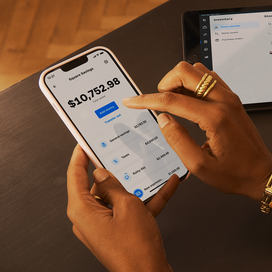Table of contents
Getting paid on time is an important part of the job and key to keeping a positive flow of cash — whether you’re a small business, sole proprietor, or freelancer. Once you have a system in place, it’s pretty easy, but it does require you to be organized and on top of invoicing. After all, when you’re on your own, no one’s going to step up as the billing police for you. We’ve put together a simple, five-step process to help make sure you send out the perfect invoice every time. Once you master creating an invoice and streamlining the process, you can spend a lot more time on the more fun aspects of running your business.
#1. Start with a template.
Pick a template, either one you create yourself in Word or Excel or one that comes with your online invoicing software. Be sure to stick to the same template and format for every invoice so clients become familiar with your invoices and know where to find all the info they need for processing. Square Invoices has professional, ready-to-go invoice templates that you can use to save time.
Get Started With Square Invoices
Get paid faster with online invoices.
#2. Include your most up-to-date contact info.
Make a formal header that contains your business’s contact information: name of business, mailing address, phone number, and email. The opposite side is usually where you include the client’s information: name of business, mailing address, phone number, and email.
#3. Design an invoice numbering system and always include dates.
Put a star next to this one. Simple as it sounds, make sure each invoice you create has a unique invoice number. This guarantees that your invoice will be processed. How you number them is up to you; just be consistent and follow a sequential order so they’re easy to track and manage. For example, you could number your first invoice as 01 or code it by client name. Then, include the date the invoice is prepared and/or the date that a project was completed. This helps you keep track of outstanding payments. You should also include a payment due date (often 30, 45, or 60 days out) so clients or vendors know when you expect to have money in hand. This helps ensure timely payments. It’s also a good idea to put a written agreement in place about payment dates before you start invoicing, just to set expectations on both ends.
Square Invoices makes keeping track of invoices simple. Each invoice is numbered and filed in your Square Dashboard, and you can sort by status — quickly determining what’s been paid and what’s still outstanding.
#4. Specify your preferred method of payment.
At the bottom of your invoice, indicate which payment method your client should use: check (and to whom the check should be made payable), credit card, or online payments platform. An online invoicing system like Square Invoices makes this step much easier for both you and your clients, as it eliminates the need for them to write and send checks — and for you to deposit them. Additionally, with Square Invoices’ Card on File feature, you can securely store your clients’ credit card information, so you can just charge their card for services rendered without having to ask them to reenter their payments information each time you create an invoice. Learn more about how to use Card on File with Square Invoices.
#5. Provide an itemized list of services with rates, applicable taxes, and fee totals.
The bulk of an invoice spells out services rendered or products purchased in a list with line item descriptions. Describe the product or service; the date the service was performed/product purchased/project completed; plus your rate (either hourly or flat rate depending on how you charge) and subtotal for each line item. Add on any applicable taxes or fees. Then calculate the total. When creating an invoice, it’s a good idea to bold the grand total so it clearly stands out. Include any additional terms and conditions somewhere at the bottom of the invoice, and you’re all set to send. Square Invoices’ templates make this step a snap.
Related Articles
Download Now: Free Invoice Templates
What Is an Invoice?
A Business Owner’s Guide to PCI DSS Compliance
![]()











